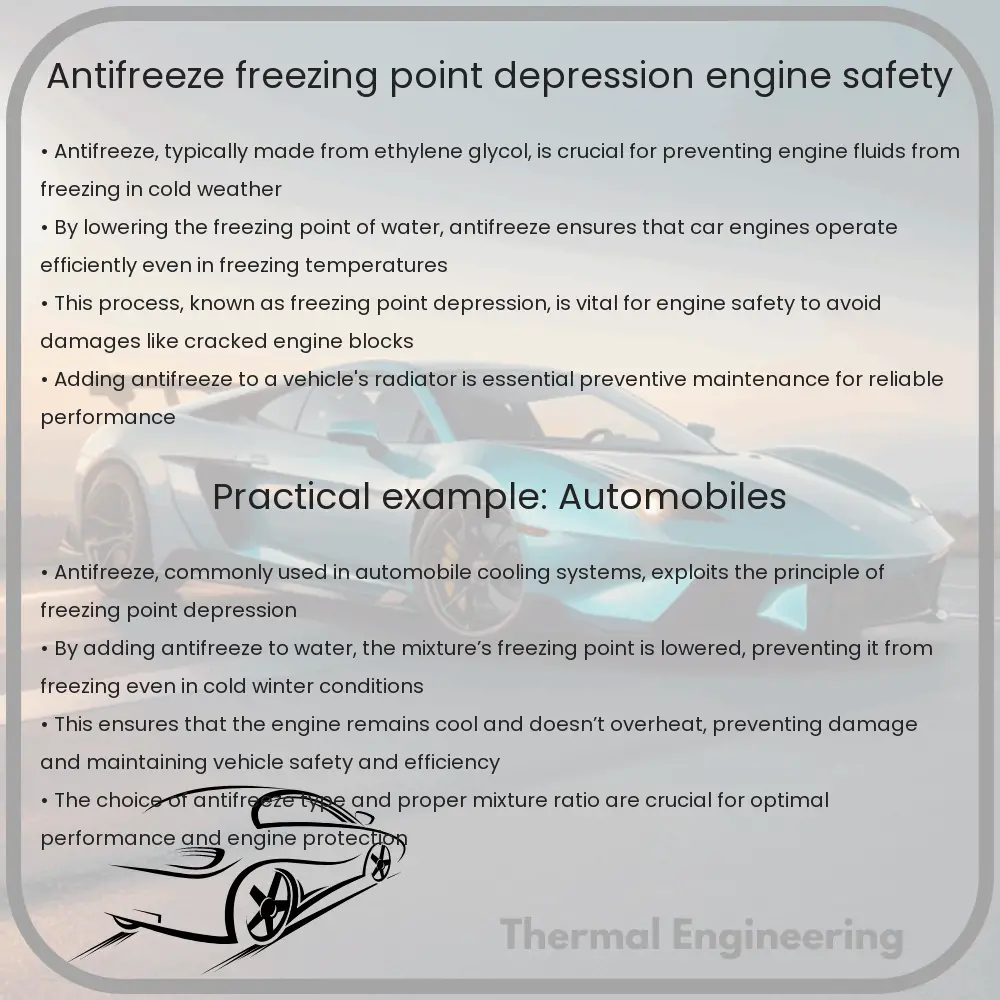Learn how antifreeze, also known as coolant, prevents engine freezing and boiling, ensuring optimal vehicle performance and safety.

Antifreeze: Understanding Freezing Point Depression and Engine Safety
Antifreeze is a critical component in maintaining engine performance and longevity, especially in cold environments. It helps prevent the engine’s cooling system from freezing in extreme cold conditions, thus averting potentially severe engine damage.
What is Antifreeze?
Antifreeze, also known as coolant, is a liquid additive that lowers the freezing point and raises the boiling point of the liquid in an engine’s cooling system. Primarily composed of ethylene glycol or propylene glycol, antifreeze not only prevents freezing and boiling of the coolant but also protects against corrosion, aids heat transfer, and prevents scale buildup.
How Does Antifreeze Work?
Antifreeze operates based on the principle of freezing point depression. When mixed with water, antifreeze lowers the freezing point of the mixture, which allows it to remain liquid in conditions that would otherwise cause pure water to freeze. Similarly, antifreeze raises the boiling point of the mixture, helping it operate effectively in high-temperature conditions.
Freezing Point Depression Explained
The effect of freezing point depression occurs due to the addition of antifreeze to water, which disrupts the formation of ice crystals. This process can be understood through colligative properties, which are properties dependent solely on the ratio of solute particles to solvent (water) molecules in a solution. The presence of antifreeze molecules in water reduces the rate at which water molecules can organize into a solid structure (ice).
The freezing point depression, ΔTf, can be calculated by the formula:
ΔTf = Kf * m
where Kf is the cryoscopic constant (freezing point depression constant) of the solvent (water in this case), and m is the molality of the antifreeze solution (number of moles of antifreeze per kilogram of water).
Boiling Point Elevation
Just as it affects the freezing point, antifreeze also impacts the boiling point. The addition of a solute such as antifreeze increases the solution’s boiling point through the phenomenon known as boiling point elevation.
The boiling point elevation is calculated similarly to the freezing point depression:
ΔTb = Kb * m
where Kb represents the ebullioscopic constant of the solvent, and m is defined as before.
Engine Safety and Maintenance
Using the appropriate mixture of antifreeze and water is crucial for the optimal performance and safety of an engine. Typically, a 50/50 mix of antifreeze and water is recommended, which usually provides freeze protection down to -37°C (-34°F) and boil-over protection up to 129°C (265°F). It is essential to check the engine’s coolant level regularly and replace or adjust the mixture according to the manufacturer’s guidelines.
It’s also important to use the type of antifreeze recommended by your vehicle’s manufacturer, as different formulations contain different additives necessary for different types of engines.
Conclusion
Antifreeze is an essential part of engine maintenance that protects engines from extreme temperatures and chemical damage. By understanding and properly managing the antifreeze concentration in your vehicle’s cooling system, you can significantly enhance engine performance and longevity while preventing costly repairs caused by temperature-related failures.